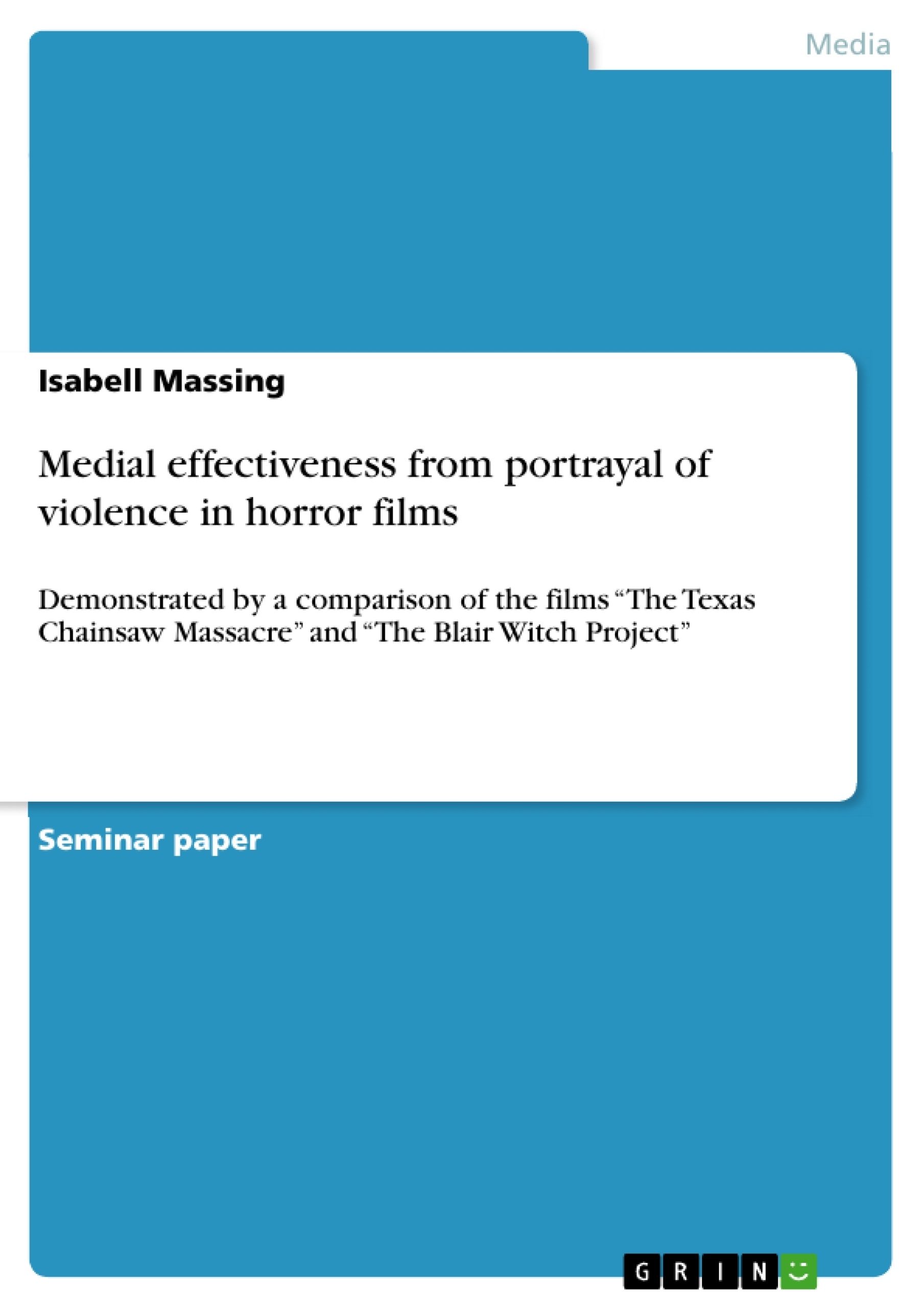1. Introduction
2. Definition
2.1 Horror films
2.1.1 Splatter films
3. Medial effectiveness from portrayal of violence in horror films
3.1 Review
3.2 Portrayal violence in “The Texas Chainsaw Massacre”
3.2.1 Film Review
3.2.2 Real documented violence in a splatter film
3.3 Portrayal violence in “The Blair Witch Project”
3.2.1 Film Review
3.2.2 Fictional violence in a horror film
4. Conclusion
Inhaltsverzeichnis (Table of Contents)
- Introduction
- Definition
- Horror films
- Splatter Films
- Medial effectiveness from portrayal of violence in horror films
- Review
- Portrayal violence in "The Texas Chainsaw Massacre"
- Film Review
- Real documented violence in a splatter film
- Portrayal violence in “The Blair Witch Project”
- Film Review
- Fictional violence in a horror film
- Conclusion
Zielsetzung und Themenschwerpunkte (Objectives and Key Themes)
This term paper explores the relationship between the portrayal of violence in horror films and their effectiveness. It aims to examine the role of splatter films in the horror genre and discuss the impact of realistic violence on the audience's experience. The paper utilizes "The Texas Chainsaw Massacre" and "The Blair Witch Project" as case studies to analyze how different approaches to violence affect the horror genre.
- Definition and characteristics of horror films and splatter films.
- The influence of the portrayal of violence on the effectiveness of horror films.
- The impact of realistic violence on the audience's perception of horror.
- A comparative analysis of "The Texas Chainsaw Massacre" and "The Blair Witch Project" to explore different strategies of violence.
Zusammenfassung der Kapitel (Chapter Summaries)
- Introduction: This chapter introduces the thesis statement that the most successful horror films, which rely on the audience's imagination, mark the end of splatter films. It argues that realistic portrayals of violence can transform horror films into documentaries rather than horror films.
- Definition: This chapter defines the terms "horror film" and "splatter film," highlighting the key characteristics and evolution of these genres. It explores the distinction between classical and modern horror films and discusses the emergence of splatter films as a specific form of cinematic violence.
- Medial effectiveness from portrayal of violence in horror films: This chapter examines the impact of violence in horror films on the audience, discussing the balance between shock and fascination. It analyzes the controversial reception of splatter films and explores the potential for real-world consequences. The chapter also introduces the question of whether realistic violence is essential for creating effective horror or whether the audience's imagination plays a more significant role.
- Portrayal violence in "The Texas Chainsaw Massacre": This chapter provides a film review of "The Texas Chainsaw Massacre," focusing on the portrayal of violence and its impact on the audience. It explores the film's use of real-life elements and its impact on the splatter film genre. The chapter also explores the controversial nature of "The Texas Chainsaw Massacre" and its potential for influencing viewers.
- Portrayal violence in "The Blair Witch Project": This chapter provides a film review of "The Blair Witch Project" and explores its unique approach to violence. It examines the film's reliance on the audience's imagination and its effectiveness in creating a sense of fear and unease. The chapter also compares "The Blair Witch Project" to "The Texas Chainsaw Massacre" in terms of their respective strategies for portraying violence and their impact on the audience.
Schlüsselwörter (Keywords)
The key themes and concepts explored in this term paper include horror films, splatter films, the portrayal of violence, medial effectiveness, audience reception, the imagination, "The Texas Chainsaw Massacre," "The Blair Witch Project," and the impact of realistic violence on the horror genre.
- Quote paper
- Isabell Massing (Author), 2012, Medial effectiveness from portrayal of violence in horror films, Munich, GRIN Verlag, https://www.grin.com/document/213921



